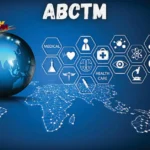The fashion industry has long struggled with balancing creativity, affordability, and sustainability. Traditional printing methods, while popular, often generate excessive waste, require large production runs, and use chemicals that harm the environment. As consumer demand shifts toward eco-conscious fashion, brands—big and small—are rethinking how they produce apparel. One technology leading this shift is DTF (Direct-to-Film) transfers.
DTF printing is not only revolutionizing garment decoration but is also setting new standards for sustainability. From reducing waste to supporting on-demand production, DTF transfers are helping the fashion industry move toward a greener and more responsible future.
The Problem with Traditional Printing Methods
Traditional apparel printing methods such as screen printing, sublimation, and vinyl application all come with sustainability challenges:
- Excessive water use – Screen printing requires large amounts of water during the cleaning and preparation of screens.
- Chemical waste – Harsh inks, dyes, and solvents often end up as waste, polluting the environment.
- Overproduction – Large minimum order quantities force brands to print more than they can sell, leading to unsold inventory and textile waste.
- Energy demands – Some printing processes require significant heat or specialized machinery, increasing energy consumption.
As sustainability becomes more important to both consumers and brands, the industry needs a cleaner, more efficient alternative.
What Makes DTF Transfers Sustainable?
DTF transfers are printed designs created on a special film and then applied to fabric using a heat press. Compared to traditional methods, DTF is more efficient, eco-friendly, and scalable. Here’s why it stands out:
1. Reduced Waste Through On-Demand Production
One of the biggest contributors to fashion waste is overproduction. With DTF transfers, brands don’t need to print hundreds of garments upfront. Instead, they can produce transfers in bulk, store them, and apply them only when an item sells. This print-on-demand model drastically cuts down on unsold stock and fabric waste.
2. No Screens, No Chemicals
Unlike screen printing, DTF doesn’t rely on chemical-heavy emulsions, screen washes, or plastisol inks. The process is digitally driven, which eliminates the need for large-scale chemical treatments. This shift not only reduces environmental pollution but also makes the workplace safer for print operators.
3. Energy Efficiency
The heat press used for applying DTF transfers consumes far less energy compared to industrial printing machines that require extensive heat or water processing. For small and medium-sized fashion brands, this translates into lower energy bills and a reduced carbon footprint.
4. Long-Lasting Prints = Less Waste
Sustainability is not just about production—it’s also about product longevity. DTF transfers are highly durable, withstanding washing, stretching, and wear better than many traditional prints. Longer-lasting prints mean fewer garments ending up in landfills due to fading or peeling designs.
5. Versatility Across Fabrics
Another sustainable advantage of DTF transfers is their adaptability. Since they adhere well to cotton, polyester, blends, and even non-traditional materials, brands can maximize their fabric choices without needing multiple printing processes. This versatility prevents resource duplication and supports more efficient supply chains.
Meeting the Demand for Eco-Friendly Fashion
Today’s consumers, particularly younger generations, want more than just stylish clothing—they want brands that reflect their values. According to several fashion sustainability studies, shoppers are more likely to support labels that use eco-friendly methods and reduce waste.
By adopting DTF transfers, fashion brands can align with this growing demand. The ability to produce only what is needed, avoid toxic chemicals, and offer durable, long-lasting apparel helps brands position themselves as environmentally responsible without sacrificing profitability.
How Small and Large Brands Benefit Alike
- Small brands – For startups and small designers, DTF transfers lower the barrier to entry. They require minimal equipment, making it possible to run a sustainable fashion line from a small studio without wasteful bulk orders.
- Large brands – For established companies, wholesale DTF transfers allow scaling production in a way that reduces excess inventory. Limited-edition drops, capsule collections, and trend-testing can all be done more sustainably.
Both ends of the industry benefit from reduced waste, lower costs, and improved brand image.
The Future of Fashion Production
As the fashion industry continues to adapt to sustainability goals, DTF transfers are poised to become a cornerstone technology. They perfectly blend the efficiency of digital printing with the flexibility of on-demand production, creating a solution that’s cost-effective and environmentally conscious.
Forward-thinking brands are already using DTF to support sustainable practices such as:
- Slow fashion – Producing garments only when there’s actual demand.
- Circular fashion – Offering durable products that stay in circulation longer.
- Responsible sourcing – Using blank garments from sustainable suppliers, paired with eco-friendly printing methods like DTF.
Final Thoughts
The fashion industry can no longer ignore its environmental impact. Traditional printing methods contribute to waste, pollution, and overproduction—problems that clash with the growing demand for eco-conscious apparel. DTF transfers solve many of these issues by enabling on-demand production, eliminating chemical-heavy processes, and providing durable, versatile prints.
For brands of all sizes, adopting wholesale DTF transfers is not just a trend—it’s a future-proof strategy. By combining innovation with sustainability, DTF printing is helping reshape fashion into an industry that is both profitable and environmentally responsible.
In short, DTF transfers are the future of sustainable fashion production.
Continue your journey with another post that complements on Management Works Media.






